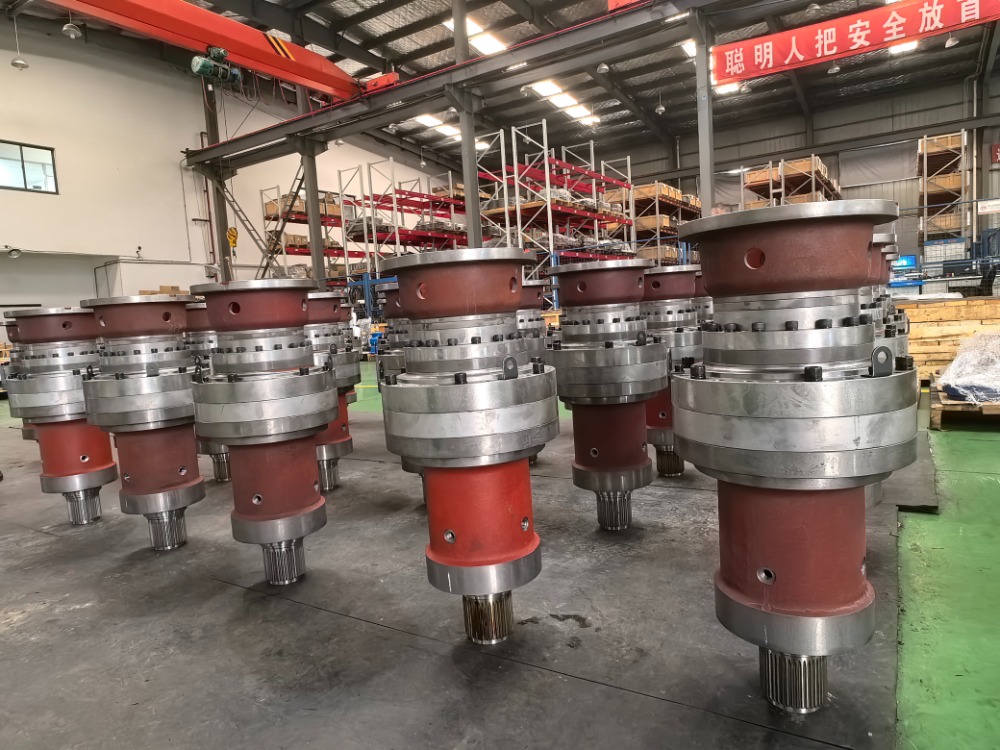SGR's N Series high torque coaxial planetary gearbox Input forms: N standard shaft input, MN flange ...
See Details Gear transmission It is the most widely used transmission form in mechanical transmission. Gear transmission refers to the use of the gear teeth of two gears to mesh with each other to transmit power and motion. According to the relative position of the gear axis, gear transmission is divided into: parallel axis cylindrical gear transmission, intersecting axis bevel gear transmission and staggered axis spiral gear transmission. In general, gear transmission has the characteristics of compact structure, high efficiency, reliable work and long life.
Gears are the core components of gear transmission systems. The design, manufacturing quality and material selection of gears directly affect the performance, efficiency and life of the entire transmission system. So, what exactly is a gear? How to choose the manufacturing process and materials of gears? How to prevent gear failure?

Gears are commonly used in mechanical transmissions. They are discs or cylinders with specific tooth shapes that transmit power and torque through the meshing between teeth. Common gear types mainly include the following 3 types:
Cylindrical gears are one of the most common gear types, with their teeth cylindrical. According to the shape of the tooth line, cylindrical gears can be divided into straight teeth, helical teeth and herringbone teeth. Cylindrical gears have the characteristics of stable transmission, strong load-bearing capacity and easy manufacturing.
The toothed shape of bevel gears is conical and is usually used for transmission between intersecting shafts. Bevel gears have the advantages of stable transmission ratio and compact structure, but are difficult to manufacture.
c. Worm wheel
The worm gear is a special form of gear transmission, where the worm is a spiral gear, and the worm gear is similar to a helical gear. The worm and worm gear transmission has the characteristics of large transmission ratio, compact structure and good self-locking properties, but the transmission efficiency is relatively low.
The processing methods of gears include milling teeth, hobbing teeth, inserting teeth, shaving teeth, grinding teeth, etc. Each method has its specific application scope and processing accuracy.
According to the accuracy level and batch size of the gear, the process flow of the gear includes rough processing, heat treatment, finishing and other stages, among which heat treatment has an important impact on the performance of the gear.
Common materials for gears include carbon steel, alloy steel, cast iron, non-metallic materials, etc. Different materials have different mechanical properties, process properties and costs. For example, carbon steel has good comprehensive properties and lower costs, and alloy steel has higher strength and wear resistance.
The failure forms of gears mainly include tooth surface wear, tooth surface pitting, tooth surface glue, and tooth root fracture. Tooth surface wear refers to the gradual wear of the tooth surface due to long-term contact and friction, resulting in reduced gear accuracy and increased noise;
The pitting of the tooth surface is generally due to the fact that the contact stress of the tooth surface exceeds the material fatigue limit under high-speed heavy loading, resulting in tiny cracks and gradually expanding, forming pitting corrosion; the glued tooth surface refers to the excessive local temperature of the tooth surface under high-speed heavy loading and poor lubrication, resulting in metal adhesion and tearing. Gear breakage is usually caused by overload or fatigue stress concentration, cracks occur at the roots of the teeth and gradually expand, resulting in gear breakage.
In industrial and mechanical applications, the following four measures can be used to prevent gear failure.
a. Choose the right material
According to the working conditions and requirements of the gear, select materials with high strength, high wear resistance and high fatigue resistance.
b. Optimize lubrication conditions
Use appropriate lubricants and lubrication methods to reduce the temperature and friction coefficient of the tooth surface, and reduce wear and glue phenomena.
C. Improve processing accuracy
By improving gear machining accuracy, reduce tooth surface roughness and reduce friction and wear.
d. Strengthen maintenance and maintenance
Regularly check the wear of the gears, replace the damaged gears in time, and keep the equipment running in good condition.